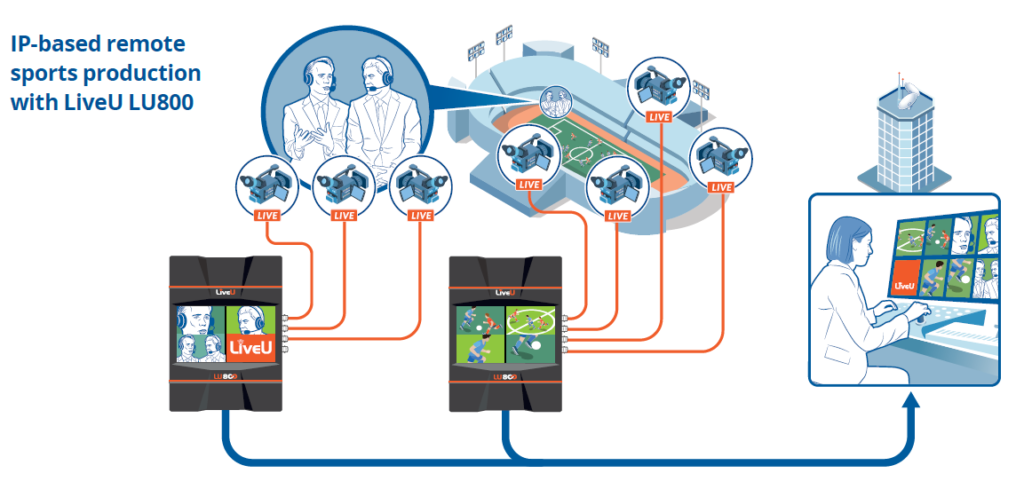The Case for REMI: What You Need to Know as Live Sports Makes its Comeback
REMI, or remote production, is quickly becoming the preferred model for sports production. If you want to find out more, you can download the LiveU eBook describing the latest IP-based workflows, the impact of 5G networks and real-world examples from around the world.
Remote production, or REMI (for Remote Integration Model), refers to productions that send camera operators and minimal production crew to remote events to feed live camera signals to a central studio for production rather than an on-site production truck. Enabled by advanced technologies like IP bonding, 4G and 5G cellular, and HEVC compression, REMI production helps a broad swath of sports producers–from high school sports to the NFL– achieve benefits like:
- A 40-70% reduction in production costs
- Reduced travel time and improved staff efficiency and productivity
- The elimination of most cables, which has slashed set-up time and increased camera crew flexibility
- Expanded creative coverage of the action surrounding an event

REMI production was on the rise before the pandemic, and COVID-19 has certainly expanded its use. But like video conferences and work-from-home, REMI will remain a dynamic trend in sports production long after the pandemic wanes.
LiveU has produced an eBook entitled The New Playback for Live Sports Productions, which describes what REMI is, how it works and the benefits that it delivers to live sports productions. The eBook features input from producers from NBC, L2 Productions, NASCAR, ESPN, the New York Jets, Tencent Sports China, and Fox Sports, and also details how producers can incorporate genlock, comms, video monitoring, and IP camera control during REMI productions, all with resilient video feeds with sub-half second latency from camera to production facility.

REMI is clearly here to stay, and this free eBook is a great way to get up to speed.

